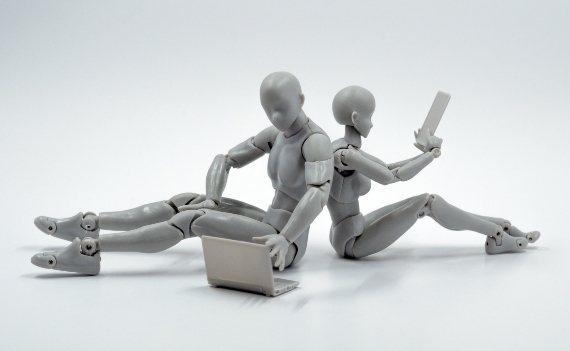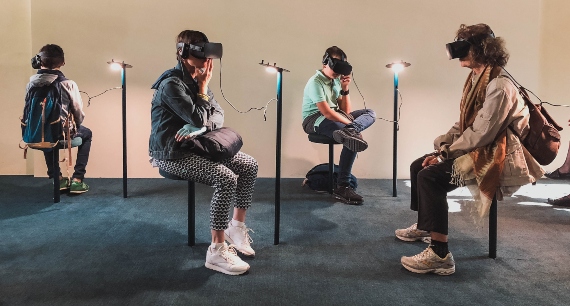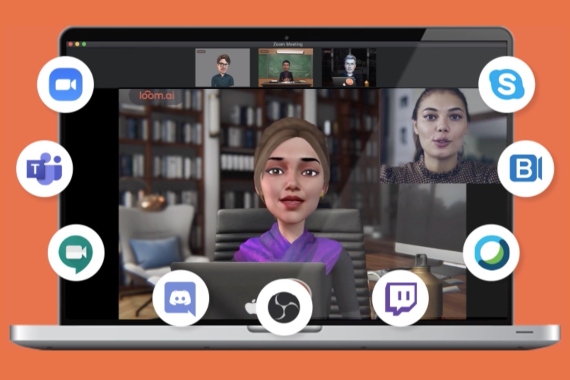Big Tech companies bet on the Metaverse, a virtual reality combining the various services already found on the internet. Typically, users can navigate through this Virtual Reality via a 3D representation: the avatar, long predicted by science fiction, including in successful movies such as “Avatar” and “Ready Player One”.
In 1516, the English lawyer, philosopher and humanist Sir Thomas More published his famous book “De optimo rei publicae statu deque nova insula Utopia,“ a travel report onthe fictional island of Utopia. Here the inhabitants establish an ideal society based on democracy, separation of powers, the pursuit of knowledge and humanity.[1] Over time, “utopia” has become a synonym for a positive vision of the future.[2]
Let us use the stars to guide us to Utopia, not More’s one, but a virtual utopia located in the Metaverse, populated by avatars. In its 2020 Hype Cycle for Emerging Technologies, Gartner identified the “Citizen Twin” as innovation, expected to be implemented in five to ten years. The consulting company explains the concept of the “Digital Me” as a representation of the human in both worlds, the real and the virtual worlds.[3] And herein arises the question, what is reality? Today’s young generations grow up with virtual and augmented reality. [4] They perceive both worlds as real. The term “virtual reality” underlines this holistic perception. A better distinction is speaking about the atomic world in contrast to the virtual one.

Digital Twins became an established technology in today’s manufacturing industry. But this is only the beginning, as the technology could be used not only for machines, but also systems and humans. For the latter, Roberto Saracco defined the “Cognitive Digital Twin” (CDT) in his blog, underlining that such a construction includes the human’s skills and knowledge. The Personal Digital Twin (PDT) goes one step further, a CDT plus representation of the individual’s physiology. Based on existing materials like audio and video material, PDTs may interact with humans or apps.
Perceived legal uncertainty may motivate governments to regulate the metaverse and personal digital twins. This also applies to authorizing them (similar to a digital signature) for official usage. This process creates a Citizen Twin. Based on local law, it may include:
- official information, like date of birth, social security number, criminal records
- healthcare information, including vaccinations
- educational information, including university degrees and certifications
- outer appearance, including biometric information
The blockchain technology promises enhanced cyber-protection for online payments and accounts, as the information does not get stored on only one server, but rather the accounts are encrypted and decentralized on numerous ones. As these different computers regularly synchronize with each other, a typical cyber or also cognitive attack on one of these servers to transfer funds to the hacker’s account,or just change the information, would not be successful. The different machines validate each other, and the deviating information (as a manipulated ledger account), would be automatically overwritten with the corresponding information stored on the other computers.[5]
Due to these possibilities, blockchains became attractive for financial transactions, up to the creation of cyber-currencies. A special kind of blockchain is the “Non-Fungible Token” (NFT). It is understood as a certificate for virtual, atomic or hybrid objects. This data file gets stored on the known blockchain network, which leads to that ownership and potential transactions get simultaneously verified by a worldwide network of independent servers. In contrast to fungible cyber-currencies, the NFT is unique to ensure the uniqueness of the objec.[6] Today, NFTs are mostly used to ensure the unique ownership of electronic objects, for example, images, videos or even tweets.

Digital Citizens require a Digital Government, also offering all required services online. Today this includes online forms and payments. In future this may extend to remote meetings and face-to-face discussions. Remote meetings with cameras are for many users a stress factor, as users feel the pressure to “look good inside the picture”. For most users, remote meetings with cameras are a non-natural situation, far outside their comfort zone, requiring a double focus: not just on the topic itself but also on ensuring an adequate appearance inside the picture. The higher the perceived pressure to look good on camera, the higher the perceived levels of fatigue.[7]
Here is where the Metaverse can be of assistance. In meetings, participants may not see the actual camera picture, but an avatar, reacting to the user. For example, moving the lips when talking and/or making supporting gestures. This is not only for when the user is talking, but even more importantly, it may show adequate behavior when listening to others, like for example nodding in agreement or smiling if laughing indicates a joke. Of course, users may personalize their avatar in appearance, but also basic behaviors for idling. Onsite official networks, remote conference systems like Teams or Zoom could use certified avatars for official meetings. Users would have to concentrate less on the appearance. Lower stress levels open up a higher possibility for creative and thoughtful discussions.

The Metaverse opens up new possibilities for daring more grassroots democracy. Citizen Twins including education, job profile and address could be invited for referendums or court services. On the other hand, if the citizens have their unique avatar, these virtual figures may be involved, or victims of crime. Even more, a deviation of law in the atomic world, for example speeding, may lead to temporary blocking of the avatar, keeping the person away from known and appreciated services. The more the technology advances, the more the worlds blur and get perceived as one. Both are realities, in the beginning, virtual reality may have been perceived as an escape from daily routines in the atomic place. But with spending an extended time in the Metaverse, experiences from there will influence our behavior in the atomic world.
Patrick Henz
[1] More, Thomas (1516): “De optimo reipublicae statu, deque nova insula Utopia.”
[2] Henz, Patrick (2020): “Utopian Islands of Ethics & Compliance”, published in Ethics & Compliance Yearbook 2020
[3] Panetta, Kasey (2021): “5 Trends Drive the Gartner Hype Cycle for Emerging Technologies, 2020”
[4] Saracco, Roberto (2021): “Opening a Pandora’s Box: Personal Digital Twins”
[5] Henz, Patrick (2021): “How smart contracts partner with blockchain to keep your agreements secure Original”
[6] Dean, Sam (2021): “$69 million for digital art? The NFT craze explained”
[7] Shockley, Kristen M. / Gabriel, A.S, / Robertson, D. / Rosen, C.C. / Chawla, N. / Ganster, M.L. / Ezerins, M.E. (2021): The fatiguing effects of camera use in virtual meetings: A within-person field experiment.
Comments on this publication